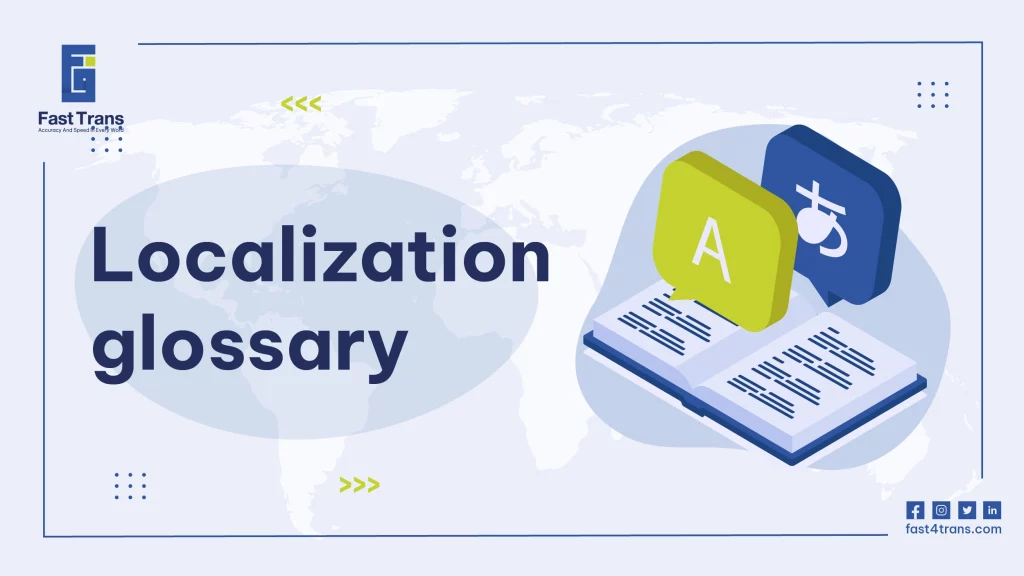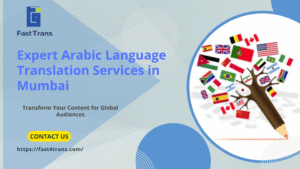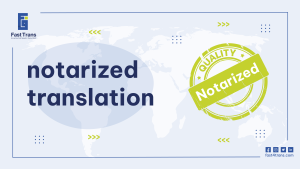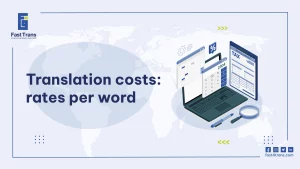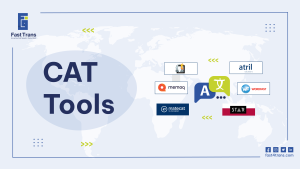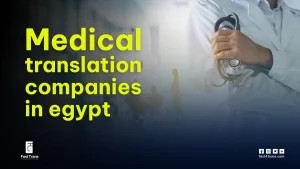Arabic Localization Glossary goes beyond translation, adapting content to resonate with Arabic-speaking audiences by considering cultural, social, and linguistic nuances, including right-to-left text formatting. It involves tools and processes like Translation Memory, Quality Assurance, and International SEO to ensure consistency, accuracy, and cultural relevance across platforms.
By integrating regional customs and preferences, Arabic localization enhances user experience and engagement, making content feel native to the audience, whether through UI design, transcreation, or tailored marketing strategies.
What is Arabic Localization?
Arabic Localization is an additional step beyond translation, tailored specifically for Arabic-speaking audiences. It involves more than just converting the language—it also requires adapting the content to fit cultural norms, values, and preferences. Localizing a business product for the Arabic market includes translating the text while considering the diverse cultural nuances of Arabic-speaking regions. This process influences decisions on UI and UX design, ensuring they align with right-to-left reading habits, as well as shaping advertising campaigns to resonate with local customs and traditions.
Read more: What is Localization and its process
Arabic Localization Glossary
Arabic localization glossary focuses on adapting digital content for Arabic-speaking audiences, ensuring linguistic and cultural accuracy through processes like translation memory, agile localization, and international SEO. It involves tools and techniques like CAT, API integration, and quality assurance to streamline Arabic content delivery across platforms.
101% Matching/ Exact Matching
In translation memories, this refers to the percentage of matching between a source text and a previously translated string obtained from the translation memory database. Both the translation and its context are matched, which ensures accuracy in translating content into Arabic.
Fuzzy Match
Fuzzy matching is a process in translation memories that deals with non-exact matches, meaning the translation isn’t identical but still close enough to be useful in Arabic localization.
Agile Localization
Tools used to merge translation and localization processes, allowing team members to work simultaneously on the same Arabic localization project, ensuring faster and more efficient development.
API Application Programming Interface
API is a set of protocols enabling software to communicate. In the context of Arabic localization, it integrates translation and transcription services into the workflow to streamline Arabic-language localization.
Back Translation
Back translation, This is a process of translating an Arabic version of text back into the original language. It helps ensure the accuracy and quality of the Arabic translation.
Computer Assisted Translation CAT
CAT tools, while not specific to Arabic localization, support translators and localizers in managing Arabic translation memories, editing, and ensuring quality assurance.
Globalization
Globalization in the context of Arabic localization refers to how businesses adapt their platforms to serve global markets, including Arabic-speaking audiences. It involves ensuring that content is suitable for Arabic-speaking regions while maintaining cultural sensitivity.
Read more: the pros and cons of globalization
Internationalization (I18n)
Relevant to Arabic globalization, internationalization (I18n) refers to structuring software to be adaptable to Arabic language and other localization processes, ensuring that localization is seamless across different regions.
L10n
L10n is a symbol for localization, referring to the 10 letters between the “L” and the “n” in the word “localization.” It involves adapting a game or software to support the Arabic language.
Language Service Provider (LSP)
An LSP offers a variety of language-related services, including Arabic translation, localization, transcreation, and more. They specialize in adapting content to the Arabic market, ensuring high-quality Arabic localization.
Read more about Language Service Provide
Locale
A locale refers to the combination of the Arabic language and the specific geographical region in which it is spoken. Locales determine the exact requirements for Arabic localization.
Localization Software
Localization software, or Translation Management Systems (TMS), is essential for managing Arabic localization projects. It keeps project managers, translators, and editors coordinated for Arabic-language translations.
Localization Testing/ internationalization testing
A quality assurance process that tests whether Arabic localization is successful and culturally appropriate, ensuring all Arabic text appears correctly in the interface.
Localizability
Localizability describes how easily a string can be translated into Arabic, including potential difficulties or challenges in conveying the meaning accurately.
LocKit
A localization kit includes source files, term bases, and glossaries specifically tailored for Arabic translation, helping translators handle Arabic-language content.
Post-Edited Machine Translation MTPE
After machine translation processes an Arabic text, a human translator reviews it for accuracy and ensures that the Arabic version meets localization standards.
Pseudo-Localization
A technique used during the Arabic software internationalization process to identify any issues with Arabic language support and ensure the content displays properly in the Arabic script.
Proofreading
Proofreading in Arabic localization is a critical step to check for grammar, spelling, and typographical errors, ensuring the final Arabic translation is polished and professional.
Quality Assurance QA
In Arabic localization, QA involves testing the Arabic version of the content to ensure it meets high-quality standards and functions correctly within the localized environment.
Right-to-left (RTL)
Arabic is a right-to-left language. In the context of Arabic localization, all text, user interfaces, and content must be adapted to support RTL formatting.
Source File
A source file contains the original language text that requires translation into Arabic. The Arabic localization process uses these source files to create the target language files.
Translation Memory (TM)
A translation memory stores previously translated strings and suggests matches when translating similar content into Arabic, saving time and ensuring consistency in Arabic translations.
Unicode
Unicode supports all languages, including Arabic, by providing a universal character set. In Arabic localization, it ensures that the Arabic script is properly rendered across different platforms.
Graphical User Interface GUI
The GUI includes elements such as icons, text boxes, and windows, which must be translated into Arabic for a seamless user experience in the localized version.
Machine Translation MT
Machine Translation refers to translating text from one language to another, including Arabic, without human intervention, although it’s often reviewed for accuracy.
Segment
In CAT tools and translation memories, a segment refers to a chunk of text, like a sentence or phrase, which will be translated into Arabic.
Transcription
Transcription is the process of converting Arabic audio into Arabic text, a necessary step in localizing audio content for Arabic audiences.
Transcreation
Transcreation involves translating the tone, style, and intent of content, ensuring it remains culturally relevant and engaging for Arabic-speaking audiences.
read more about the different between transcreation and translation
GILT
GILT stands for Globalization, Internationalization, Localization, and Translation—four essential steps that ensure your content resonates with Arabic speakers across different regions.
XML Localization Interchange File Format
XLIFF is a widely accepted XML-based format for streamlining Arabic localization processes. It helps ensure that translations are accurate and easily integrated into software and other platforms.
Simship
Simultaneous Shipping refers to the strategy of releasing content simultaneously across various international markets, including Arabic-speaking regions, ensuring global accessibility.
Language Code
A language code is a standard identifier used to distinguish languages. For Arabic, the language code is AR, indicating the Arabic language for localization.
Concordance Search
Concordance search helps retrieve specific phrases and words from the translation memory for maintaining consistency in Arabic translations.
Content Management System (CMS)
Similar to TMS, A CMS is a platform for managing website content, and it must support Arabic localization, ensuring seamless integration of Arabic text into the website.
Continuous Localization
Continuous localization integrates localization processes during the development of a product, ensuring that Arabic translation stays up-to-date as the software evolves.
DNT
DNT ensures that brand names, trademarks, or other crucial terms remain untranslated in Arabic, preserving the integrity of the brand.
In-context Translation
In-context translation allows translators to see how the Arabic text will appear in its environment, including images and UI elements, ensuring that translations fit naturally.
International SEO
International SEO optimizes websites to rank well in search engines across different regions, including Arabic-speaking countries, by using region-specific keywords and adapting to cultural nuances.
Keys
Keys in the code or files serve as placeholders for specific text in Arabic, which is later replaced by the proper Arabic translation.
Language Pair
A language pair refers to the languages a translator works with, such as English-Arabic.
Placeholder
A placeholder is used in Arabic software localization to represent a variable, which is replaced with actual content, such as a name or date, during translation.
Fast Trans localization services
That being said, Fast Trans has established itself as a leading translation and localization company across the MENA and it’s offering an array of localization services like: transcreation, software localization, SEO translation, and game localization.
Our team of translators implement the latest translation technologies, and meet tight deadlines with the highest translation quality.
When working with us on any project, a translation sample is offered for free, in addition to that we proudly offer highly competitive quotes compared to others in the market!
Your journey with Fast Trans starts here
Conclusion
Arabic localization is the process of tailoring content to Arabic-speaking audiences by not only translating text but also adapting it to fit cultural, social, and linguistic norms. It goes beyond simple translation, ensuring that products and services resonate with Arabic-speaking users by considering regional customs, preferences, and right-to-left text formatting. This process extends to user interface and user experience design, advertising strategies, and making the content culturally appropriate and accessible for Arabic regions.
The Arabic Localization Glossary provides key terms and concepts related to the localization process. Terms like “Fuzzy Match” and “Translation Memory” focus on optimizing translation accuracy and consistency, while tools like “Localization Software” and “Quality Assurance” ensure the smooth integration and high quality of Arabic content. It also covers essential elements such as “Right-to-Left (RTL)” text support, “International SEO,” and “Transcreation” to ensure that content is not only linguistically accurate but culturally engaging, enhancing its appeal in the Arabic-speaking market.

